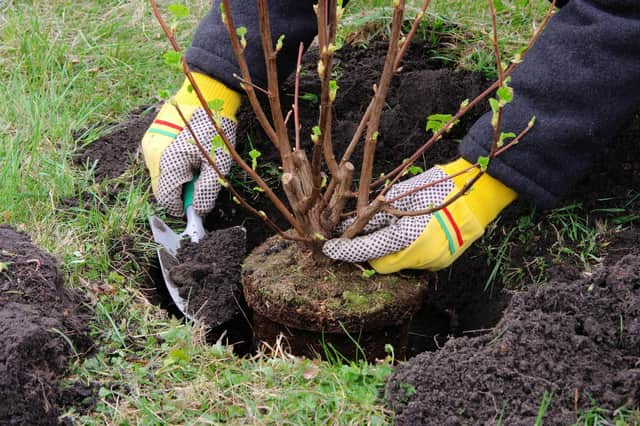BRIAN KIDD: It's a tricky job but worth it in the end


If the tree or shrub is a small one there's no real problem as there isn't even a need to take out a trench around the plant; it's just a matter of using a spade around the outside of the area where the roots are, shifting the plant and putting it in its new position straight away.
There's no need to rush as this can be done with almost all outdoor plants from late October to the end of February.
Advertisement
Hide AdAdvertisement
Hide AdBut what about something large and special like a camellia, rhododenron or even a tree which may be in the wrong place?
The most important roots on all trees and shrubs are the small fibrous ones. They absorb water and nutrients. Large ones, including the tap root, are there to anchor the plant so it won't fall over in the wind. We have to not only retain as much of the fibrous root as possible but also encourage more so the plant won't die when moved.
Fibrous roots are not usually found at the base of the trunk or stem. They're spread out so the finest ones are around the outside edge of the leaf canopy so when it rains even the smallest amount of water will fall on to the area so these roots can absorb it. It's a bit like raindrops falling off the outside of an umbrella. This is clever. When we have had no rain for ages but then a heavy shower arrives, the fibrous roots quickly take the water into the shrub.
If we want to move a plant therefore, we must take out a trench sufficiently far enough away from the base of the trunk. At the same time, the root ball which has to be taken out must be light enough to handle.
Advertisement
Hide AdAdvertisement
Hide AdA trench about 10 inches deep is usually sufficient and the year before you decide to move the tree, the trench is dug out all around the base and then back-filled with 40 per cent peat, five per cent garden soil with about 10 per cent coarse sand and some fertiliser so during the spring and summer the fibrous roots will grow into the compost and the fibrous roots will ensure the plant can be moved with 100 per cent success.
Underneath the fibrous roots you will encounter the anchor roots and possibly a tap root too.
All of these will have to be cut. The smaller ones can be cut using a spade but a pruning saw is ideal for this job as it is very easy to manoeuvre. Don't worry, cutting these roots will not harm the plant, remember they are there for anchorage.
In spring and summer, a tremendous amount of root fibre will be produced so the tree can be moved the following winter.
If you think this is a formidable task, you are dead right.
Advertisement
Hide AdAdvertisement
Hide AdBut it's the method used by good nurseries which supply superb semi-mature trees to almost any size, so, it must be worth the trouble.
The second method is used for real treasures and it's not often you see this done really well but my best friend uses this method extensively, again with great success.
Our objective is to try to retain as much soil on the fibrous roots as possible and to stop them drying out in the wind while the work is under way.
A trench is taken out all around the outside of the large plant and the soil is kept really firm from where the stem is right to the outside of the ball of soil which is to be moved with the plant.
Advertisement
Hide AdAdvertisement
Hide AdOnce the trench has been excavated, a large piece of sacking is placed down the side of the trench, then under the root ball and up the other side. The sack is then tied tightly and the plant and root ball lifted out with the smoothest of actions so the soil remains on the roots.
The new planting hole is prepared carefully in advance so that it's a case of just slipping the plant into its new situation. The sacking is left around the root ball and will rot away as time goes by.
This method takes a long time and can't be rushed, but the results are always worth the time taken.
One good soaking, preferably with rainwater is essential, after which, all through the spring , spray the bark and foliage with clean rainwater every evening unless we have lots of rain. This will ensure the new roots will not be drowned and as some of the roots may have been damaged, will ensure the water will be absorbed by the plant through its leaves and green stems.
Advertisement
Hide AdAdvertisement
Hide AdNever allow the soil to dry out of course. It will need water all the time but try to think a little bit differently. Air is important in the soil and too much water will cause the root to rot; not enough will cause the foliage to wilt.
TIP OF THE WEEK
If you love snowdrops but have never been able to grow them, this is the time to plant them '˜in the green'. You will find them advertised in gardening magazines and even at your local market in bunches wrapped in newspaper.
Plant in groups of two or three and they will flower and produce seeds which will grow alongside the parent plants.
Â
Â